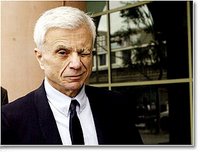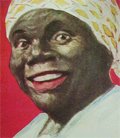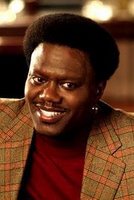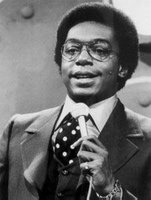
The following appeared in The Chicago Sun-Times…
----------------------------------------------
Black Power talked revolution
March 26, 2006
BY CHRISTOPHER BENSON AND CLARENCE LANG
‘Black power’ has always been a sort of socio-political Rorschach. We have seen in it what we have wanted to see. That is apparent from recent headlines that show many detractors still associate the black power movement with unfocused rage, lawlessness and urban rebellion.
As the Chicago City Council wrestles with a proposal to rename a portion of West Monroe “Chairman Fred Hampton Way,” there are significant points that are not likely to be made. Cut through the defiant poses and the fiery rhetoric, and you find something truly surprising. Black power might have spoken the language of revolution, but for the most part pursued a strategy of reform.
Yet, despite two generations of thoughtful analysis and scholarship, many commentators still draw sharp contrasts between black power and what was presumed to be a nonviolent, largely Southern civil rights struggle led by the Rev. Martin Luther King Jr. Oversimplifying black power in this way obscures the common ground that both periods of the civil rights movement occupy. It ignores the actual content of black power programs and overlooks the way in which black power, in fact, grew out of the successes and failures of civil rights activism itself.
Born of disillusionment
In a way, the civil rights movement prepared the ground upon which the black power movement was built. In a way, the civil rights movement was always about black power.
What is the true meaning of black power? What did it accomplish? How does it challenge us in moving forward, together? These are among the issues to be considered this week at the University of Illinois at Urbana-Champaign, where scholars, writers and activists are assembling for a national conference on black power.
The 1963 March on Washington for Jobs and Freedom had powerfully articulated black demands for full citizenship. By 1965, the movement had yielded remarkable victories, notably the Civil Rights and Voting Rights acts.
But arrests, beatings, church bombings and murders had created restlessness among young activists. And they became more vocal in their criticism of the Kennedy and Johnson administrations, at best unreliable allies. Meanwhile, industrial flight, black youth unemployment, police abuses and other urban crises had sparked black rebellions.
Thus, when Willie Ricks and Stokely Carmichael popularized “black power” in 1966, they expressed the frustrations and idealism of a generation disillusioned by American liberalism, drawn to black nationalism and moved by Third World freedom struggles.
Yet, black power was something of a blank slate, lacking real definition. It was broad enough to embrace a wide range of initiatives. There were the Panther-style free children’s breakfast programs, health clinics and legal services, as well as some of the earliest neighborhood watch programs -- armed Panthers who monitored police abuses. Black power programs ran the gamut from the spectacular to the mundane: efforts to secure land reparations and welfare rights and dignity for public housing tenants.
But the same vagueness that made black power a broadly effective force also made it threatening to white middle America, able to fill in the blank with a media-enhanced frame of violent confrontation. The militant rhetoric of spokesmen such as Carmichael, H. Rap Brown, and Eldridge Cleaver, set against the backdrop of recurring urban revolts, only heightened that anxiety.
On balance, however, black power’s achievements have been moderate.
Black power helped democratize higher education. It dramatically expanded the ranks of African-American students at historically white universities where, among other things, they successfully campaigned for black studies curricula. The result has been a couple of generations of scholars -- people such as former Black Panther Kathleen Cleaver, a Yale-trained lawyer who teaches at both Yale and Emory Universities -- and critical-thinking graduates, such as Aaron McGruder, creator of the influential and irreverent “Boondocks” cartoon and TV series.
Many white students, drawn by an interest in the experiences of racial minorities, also have become loyal constituents of black studies courses, preparing themselves to take on the future challenges of a diverse society.
Transformed the work force
In other instances, black power became bloc power. In Chicago, African Americans, outraged over the deaths of Hampton and Clark, voted Hanrahan out of office. Years later, they voted Harold Washington in. And black business people and professionals provided critical seed money for Barack Obama’s successful Senate run.
Elsewhere, black power transformed our work force, providing jobs in skilled trades, manufacturing, municipal employment, utility companies, and other well-paying areas of the economy that historically had not hired or upgraded African Americans. And then there are the media, where black voices are heard, not nearly enough, but heard nonetheless, in front of the camera and on the front page and -- even more important -- behind the scenes, where decisions are made about the framing and presentation of stories and perspectives, such as this essay.
Because of black power, “Negroes” became “black” and showed the world its beauty. Arts and entertainment have been forever changed by the reclamation of African-derived culture, and the development of a black-centered ethos. The contemporary black cinema of filmmakers Spike Lee, Julie Dash, Haile Gerima and John Singleton owe their success to the breakthrough films of the 1970s. Black power influenced the works of recording artists as diverse as James Brown, Nina Simone and Roy Ayers, as well as the politically potent lyrics of hip-hop artists such as Talib Kweli, Dead Prez, the Coup, Common, Nas and Kanye West.
Rap moguls such as P. Diddy and Jay-Z can link their music entrepreneurial success to the franchise opportunities wrested from corporate America in the late 1960s. On this score, even Richard Nixon -- who oversaw the violent repression of groups like the Panthers -- could endorse black power. True, he called it “black capitalism,” but the programs of affirmative action and minority business set-asides that began with his administration were, at least in part, about giving segments of black America a stake in the system.
Beyond its specific effects on African Americans, black power inspired others, helping to propel a sweeping “rights revolution” among other people of color, as well as white women, gays and lesbians, environmentalists, war veterans and the disabled.
The real fundamental aspects of the black power movement -- self-determination, self-definition, self-expression -- were all expressions of fully engaged citizenship. It was about inclusion and participation. black power advocates were the trustbusters of their day. They were talking about breaking up monopolies of power. And giving up exclusivity must have seemed like a radical thing to people who had never had to consider living in a pluralistic society.
That is why, whether the Chicago City Council votes up or down on Chairman Fred Hampton Way, there already has been a victory of sorts. Fred Hampton is on the agenda, placed there by an African-American alderman, Madeline Haithcock. And agenda-setting is an act of power.
It is time to consider the continuing challenge of black power -- a challenge to both black and white America.
For African Americans, the challenge is in determining how to resolve the unfinished business and unexpected outcomes of the past.
Expanded the middle class
Ironically, one of black power’s most lasting legacies, the growth of a contemporary black professional middle class, fragile though it is, has led to deepening class conflict among African Americans today. Indeed, the post-civil rights/black power black middle class has developed alongside an expanding black urban working-class poor (the so-called underclass) devastated by economic dislocation. Internal black class tensions, arising amid gentrification projects in places such as New York’s Harlem and Chicago’s Bronzeville, challenge the assumptions of a common African-American interest that underlay many black power programs of the 1960s and '70s.
At colleges and universities, ethnic studies programs, and faculty and students of color, have weathered hostility and legal challenges, challenges that likely will intensify.
On the political front, two generations of black mayors have had to contend with the effects of industrial flight, weak tax bases, a federal government in retreat from urban policy, and the siphoning of economic resources to surrounding suburbs. Likewise, black electoral influence has been thwarted by lawsuits against majority-minority voting districts and, as illustrated in the 2000 presidential election, outright disfranchisement. For an entire nation, the popular vote for president did not count because of votes that were not counted in Florida.
For whites, then, the challenge still is in realizing that, at the end of the day, there is nothing to fear but everything to gain from a true appreciation of black power and its promise of collaborative progress. After all, it’s not about hostile takeovers. Black power is not a zero-sum game. Ultimately, it is about making this country a truly democratic space by creating more opportunity for everyone to meaningfully participate.
At its heart, deep in its soul, black power has always been about power sharing.
Christopher Benson is associate professor of African-American studies and journalism, and Clarence Lang is assistant professor of African-American studies and history at the University of Illinois at Urbana-Champaign.
































